When it comes to grilling or smoking ribs, one of the age-old questions that arise is, “how many ribs in a rack?” This may seem simple, but it can vary depending on the rib type and where it comes from on the animal. Understanding how many ribs are in a rack can help you plan your menu, portion sizes, and cooking time. So, whether you’re a seasoned pitmaster or a backyard cook, let’s explore the mystery of how many ribs are typically in a rack and what factors can affect this number.
What is a “Rack” or “Slab” of Ribs?
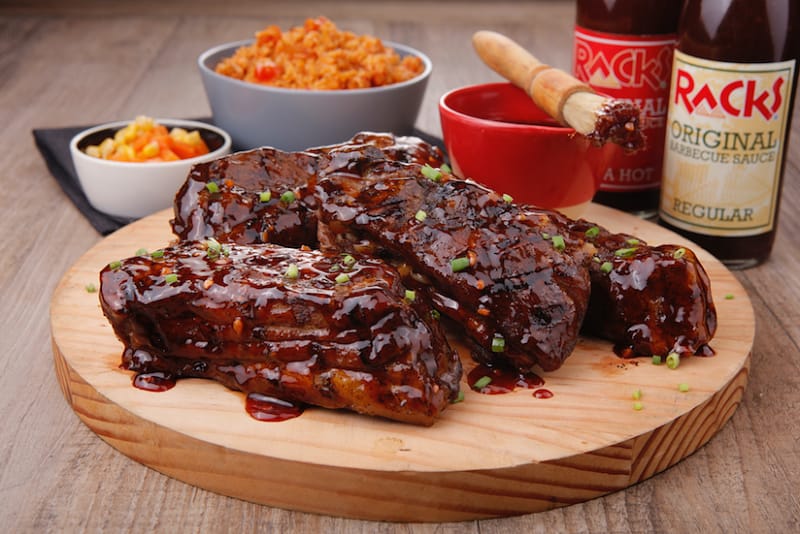
Simply put, a rack of ribs is a whole section of ribs that have been cut off the entire rib cage of the animal. A slab of ribs is the same, except it has been cut in half down the center. Both are typically cut into individual portions, each containing several bones.
When purchasing ribs, it is essential to note that a rack of ribs is typically more expensive than a slab. This is because the rack of ribs contains more meat, as the entire rib cage is present. The slab of ribs is usually more economical, as it only has half of the rib cage.
In terms of cooking, a rack of ribs is usually the preferred choice. This is because the rib cage is still intact, and the individual ribs are connected, making it easier to slow cook or barbecue. A slab of ribs is usually better suited for grilling, as the ribs can be cooked quickly over high heat.
Understanding Types of Racks
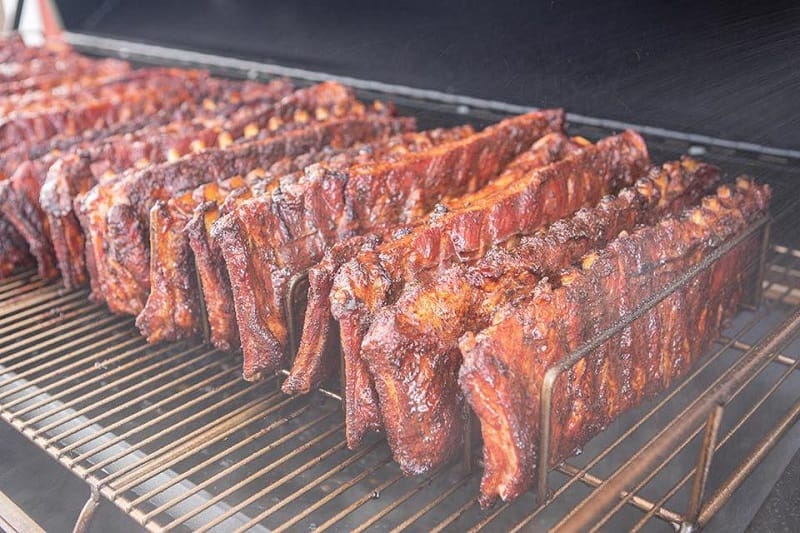
Pork Ribs
If you’re a meat lover, chances are you’ve come across pork ribs at some point. Pork ribs are a delicious cut of meat that is popular in both Western and Asian cuisines. They are the rib bones and associated meat from a domestic pig. Pork ribs come in three main cuts: back ribs (also known as “baby back ribs”), spare ribs, and St. Louis-style ribs.
Back ribs are meatier and come from the pork loin, while spare ribs come from the belly of the pig and are usually trimmed down into smaller, meatier pieces. St. Louis-style ribs are a particular type of spare rib that is flatter and more uniform in shape. Pork ribs are often prepared by smoking or grilling and are typically served slathered in barbecue sauce for maximum flavor. With their tender meat and finger-licking goodness, pork ribs are a staple of many kitchens and barbecue pits worldwide.
Beef Back Ribs
Beef back ribs are a mouth-watering cut of beef from the back of a cow, in the same area where you find juicy ribeyes and prime rib. These ribs are known for their meaty and flavorful taste and are a favorite of many meat lovers. After the ribeye roast is removed, these ribs are what is left. They tend to be elongated and are larger than short ribs.
To prepare beef back ribs, one can season them with a dry rub and then bake them in the oven for about 3 hours at 275 degrees F until tender. Alternatively, they can be grilled over indirect heat at 250° F using oak or hickory wood for an added smoky flavor. Don’t forget to remove the membrane on the back of the ribs for the best taste.
Chuck Short Ribs
Chuck short ribs come from the shoulder area of a beef animal and are known for their rich, beefy flavor. They are ideal for slow cooking and yield both tender and juicy cuts. These ribs are beautifully marbled, which adds to their delicious taste. To prepare them, it is suggested to slather them with a sauce of choice and then season them with salt and pepper. Short ribs are typically small and originate from the beef chuck portion of the animal. When cooking, seasoning them liberally with salt and pepper and grilling them until charred on all sides is recommended. With an average weight of 3-4 lbs per piece, each package contains two full bone-in chuck short ribs that are perfect for any BBQ party.
Spare Ribs
Spare ribs are a classic favorite among pork lovers everywhere. Consisting of a section of the pig’s rib cage that is slightly fattier and meatier than baby back ribs, they offer a tender, juicy, flavorful cut that is perfect for grilling or oven baking. The membrane on the back of the ribs must be carefully removed to ensure maximum flavor absorption, and a dry rub or sauce is often added to enhance the taste. While traditionally cooked on a grill or smoker, oven-baked spare ribs can be just as delicious when seasoned and cooked to perfection.
Short Ribs
Short ribs are a delicious and tender cut of beef often used in various dishes. They come from beef cattle’s brisket, chuck, plate, or rib areas and consist of a short portion of the rib bone surrounded by meat. Typically, five of these small pieces of meat are too small for a full-sized rib but perfect for slow cooking or braising.
Short ribs are best seasoned with salt and pepper and then seared on high heat before transferring them to the oven for roasting or braising. They can be paired with herbs and spices to create a flavorful and tender meal.
Lamb Ribs
Also known as riblets or Denver-style ribs, lamb ribs are the equivalent of spare pork ribs and offer a unique taste. To make them even more savory, these delicious ribs should be marinated in a creamy lemon and garlic sauce for 30 minutes before roasting for a tangy crust and rich flavor. While it is important to cook lamb ribs low and slow, the result is tender, tasty meat that is well worth the wait. Adding herbs and spices like rosemary, thyme, and garlic, lamb ribs can add a Middle Eastern and European flavor to any meal.
Plate Short Ribs
Plate short ribs are a delicious cut of meat from the lower part of the rib cage, located on the animal’s underside below the rib primal. They are also known as beef plate ribs and are often confused with beef back ribs, which come from a different part of the animal. Plate short ribs have a higher fat content, making them juicy and well-marbled.
They can be prepared in many ways, including smoking, braising, or grilling, and are a popular choice for barbecue enthusiasts. To prepare them, the fat cap and silverskin should be removed before cooking.
Riblets
Plate short ribs are a popular cut of beef that is well known for their excellent taste and marbling. This type of beef rib comes from the animal’s underside, directly beneath the rib, and is sometimes referred to as beef plate ribs. They are not to be confused with beef back ribs, which come from the upper portion of the rib cage. These meaty ribs are flavorful and can be enjoyed in various ways, such as smoked or slow-cooked. To prepare, removing the fat cap and silverskin before cooking is recommended.
Baby Back Ribs
Baby back ribs are a delicious and popular dish often served at restaurants and backyard barbecues. These ribs get their name because they are cut from the back of the pig and are smaller and more tender than traditional spare ribs. Baby back ribs are known for their sweet and smoky flavor, typically achieved through slow cooking, seasonings, and marinades. They are sometimes served dry, with only a spice rub or a tangy barbecue sauce. Baby back ribs are a favorite dish for meat lovers and are often accompanied by sides such as corn on the cob, coleslaw, and baked beans.
How Many Ribs In A Rack?
When it comes to ribs, there can be a lot of confusion on just how many ribs are in a rack. On average, a full pork rack will contain 10-13 ribs, while a full beef rack usually has nine. Loin ribs typically only have 7 or 8 in a full rack. However, it’s important to note that the number of ribs can vary depending on the particular animal and the cut of the meat. It’s always best to check with the butcher or packager to confirm the exact number of ribs in a rack.
How Many Ribs Are On A Full Rack Of Pork Ribs?
A fan of delicious pork ribs may be curious about how many bones they can expect to chow down on within a full rack. Factual data reveals that a typical full rack of pork ribs contains between 10 and 13 bones, although there may be some variation depending on the specific cut of meat and the animal it comes from.
How Many Ribs Are On A Full Rack Of Lamb Ribs?
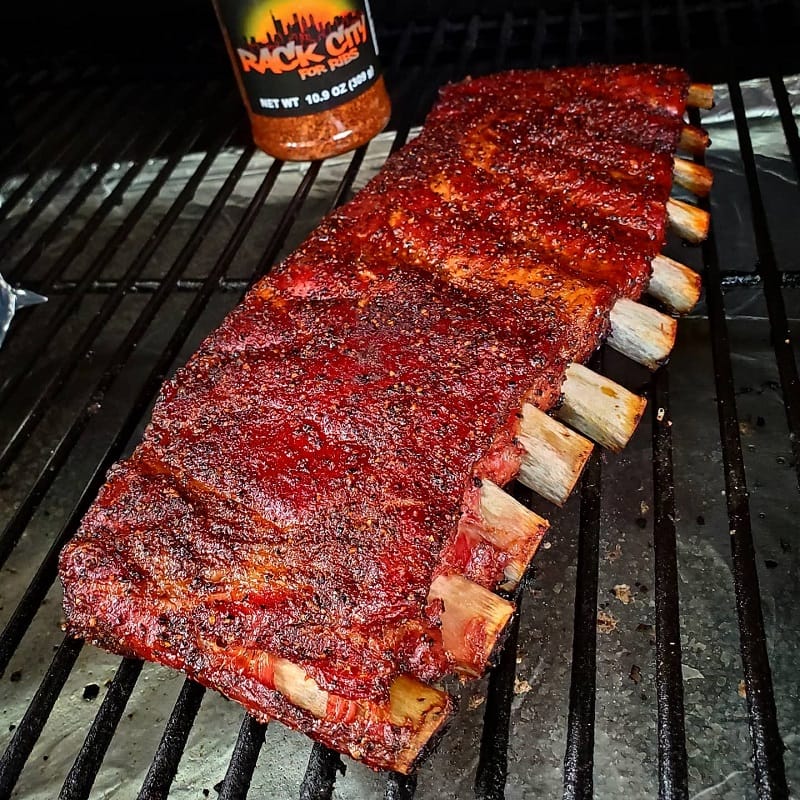
According to factual data, a “rack” of lamb is a section of ribs, usually 7 to 8 lamb chops in one piece. However, there may be instances when you see only seven ribs due to the way they are cut. This meat is easy to carve and is often a centerpiece dish at dinner parties. If you plan on serving a full rack of lamb at your next gathering, remember that one full rack (8 ribs) is enough to feed four people.
How Many Ribs Are Typically In A Half Rack Of Ribs?
Well, the answer may vary depending on the type of ribs you’re talking about. For pork ribs, a half rack usually contains 5-6 ribs, while a full rack can have 10-13 ribs. On the other hand, a half rack of beef ribs typically consists of 4-5 ribs, with a full rack having nine ribs. And if you’re ordering St. Louis-style pork ribs, a half rack can range from 3 ribs to half a rack, while a slab of spare ribs should have at least 11 bones or ribs.
Read more:
How Many Ribs Are Typically In A Quarter Rack Of Ribs?
It is common to see menus offering both full and half racks of ribs, but what about quarter racks? When it comes to the number of ribs in a quarter rack, it can vary depending on the animal and cut.
However, as a general rule, a quarter rack of ribs typically contains 3 to 4 ribs. Pork and beef quarter racks usually include 2 to 3 ribs, while lamb can have up to 4 ribs. These smaller portions make for a great option for those who don’t want to commit to a full or half rack or want to try a sampling of different flavors.
Factors That Affect the Number of Ribs in a Rack
When it comes to cooking ribs, the number of ribs in a rack can vary greatly depending on a range of factors.
Different types of animals and cuts of meat will naturally result in other numbers of ribs. For example, a full rack of pork ribs can have up to 13 ribs, while a full beef rib rack usually has only 9. The thickness of each rib bone also plays a role, as a full rack can be made up of anywhere between 7 and 11 ribs depending on this factor.
The size and weight of a slab will also vary depending on the animal, with some beef ribs being as long as 18 inches. When planning a gathering or meal, these factors should be taken into account to ensure that the right number of ribs are available to satisfy everyone’s appetite.
The Importance of Knowing the Number of Ribs in a Rack
Knowing the number of ribs in a rack is essential for those who love to indulge in BBQ meals. A rack of ribs can come in various sizes and different animals, each with its unique number of ribs.
Understanding how many ribs comprise a half or full rack is crucial for ordering the correct amount and ensuring no one goes hungry. Additionally, serving size depends on the number of guests and their appetites. Therefore, by clearly understanding the number of ribs in a rack, one can plan for delicious BBQ food and avoid wasting meat. So, if you’re hosting a BBQ, brush up on the number of ribs in a rack to guarantee a perfect and delicious meal for everyone.
Are There Any Benefits To Eating Ribs, Nutritionally Or Otherwise?
The answer, as with many things, depends on the specifics. While ribs contain a lot of fat, they can be a good source of protein, iron, and other essential nutrients. Pork baby back ribs, in particular, are relatively low in calories and high in vitamins and minerals. Additionally, pork and beef ribs contain vitamin B-5 and choline, which can help support nervous system function and brain signaling.
So while you may not want to make ribs a staple of your diet, they can certainly be enjoyed in moderation as part of a healthy, balanced diet. Just watch your portion sizes and pair your ribs with plenty of vegetables to round out your meal.
How Long To Smoke Beef Ribs?

According to factual data, beef ribs typically take around 5 to 8 hours to smoke at around 225-250 degrees Fahrenheit. However, this can vary depending on the size and thickness of the ribs, as well as the particular recipe or seasoning used.
It’s essential to use a meat thermometer to check the internal temperature of the ribs, which should reach at least 145 degrees Fahrenheit to ensure they are safely cooked. The friendly advice is to be patient and let the smoke work its magic, as slow cooking is the key to achieving tender, flavorful beef ribs.
What Are The Best Beef Ribs For Barbecue?
What types of beef ribs are the best for that perfect, mouth-watering smoky flavor? According to factual data, it turns out that the short plate ribs are the way to go. These ribs have a high fat and connective tissue content, which makes them perfect for slow cooking over low heat.
Additionally, they have a large amount of meat on top of the bone, making them a great choice for anyone looking for meaty, flavorful ribs. So, next time you fire up the grill, consider picking up some short-plate ribs – your taste buds will thank you.
Can You Successfully Cook A Rack Of Ribs On A Gas Grill, Or Is Charcoal Preferred?
When it comes to cooking mouthwatering ribs, the debate between gas and charcoal is longstanding. But is it possible to cook a perfect rack of ribs on a gas grill?
The answer is yes! While charcoal grills offer a traditional smoky flavor, gas grills are convenient and easy to use. The trick to achieving perfectly cooked ribs on a gas grill is to use indirect heat, keep the lid closed, and maintain a steady temperature. Marinating the ribs beforehand can also enhance the flavor. However, a charcoal grill is still the way to go if you want that authentic smoky flavor.
What’s The Difference Between “Wet” And “Dry” Rib Rubs, And Which Is Better?
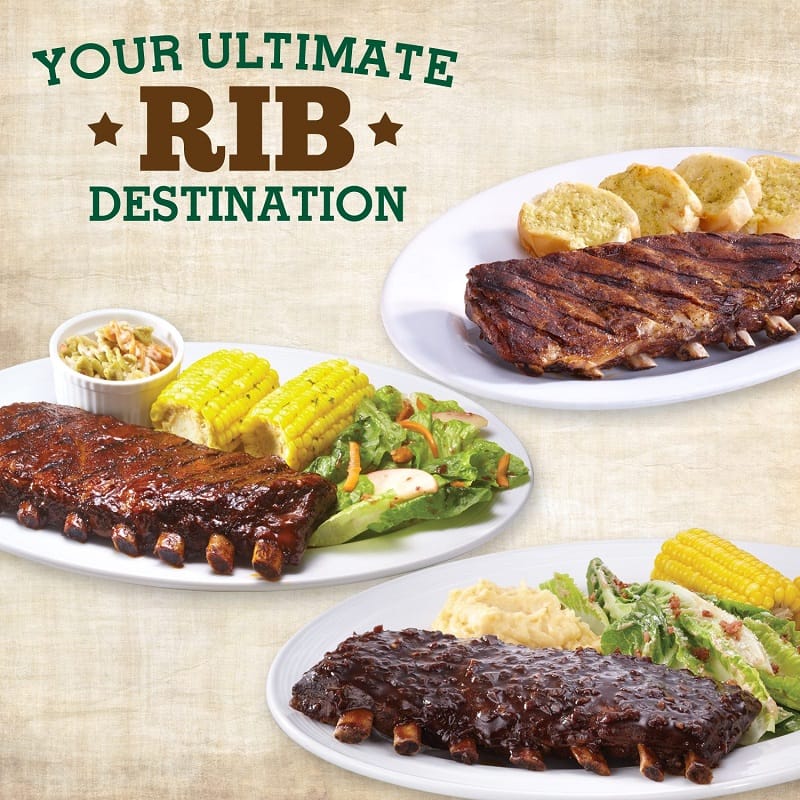
To help you make an informed decision, let’s look at the differences between wet and dry rubs and which is best for your BBQ needs.
- Wet Rubs: Wet rubs are a combination of herbs, spices, and other flavorings mixed with a liquid ingredient. This could be anything from Worcestershire sauce and olive oil to beer, mustard, or even liquid smoke. The mixture is then rubbed into the meat before cooking and helps seal moisture and flavor. Wet rubs are typically used for slow cooking, such as smoking or barbecuing, as the liquid helps to create a flavorful crust and helps the rub to penetrate the meat more deeply.
- Dry Rubs: Dry rubs are a combination of herbs, spices, and other flavorings that are mixed and then applied to the meat prior to cooking. Dry rubs typically contain sugar, which helps caramelize the meat’s outside and create an incredibly flavorful crust. Dry rubs are usually used when grilling or roasting, as the sugar helps the rub stick to the meat’s surface, creating a flavorful crust.
Which Is Better?
It depends on the type of meat, the cooking method, and the desired flavor. For slow cooking, wet rubs are typically the better option as the liquid helps to seal in flavor and moisture. For grilling or roasting, dry rubs are usually the better option, as the sugar helps to create a crunchy, caramelized crust. Generally, most people prefer to use wet and dry rubs to ensure their food is perfectly seasoned and flavorful.
No matter the rub you choose, the important thing is that you use fresh ingredients and season the meat generously and evenly – that way, your food will be sure to come out delicious!
How Thick Should Your Rib Chops Be Before Grilling?
When comes to grilling rib chops, thickness is a key factor in ensuring a tender, juicy result. From my experience, rib chops should be around 1-1.5 inches thick before grilling. Thicker chops can take longer to cook and may not reach the desired internal temperature evenly, resulting in a dry or undercooked meat. On the other hand, thinner chops can easily overcook before developing a proper sear.
Additionally, it’s important to choose the right type of chop for grilling. Look for rib chops that still have some fat marbling, which will add flavor and prevent the meat from drying out. And don’t forget to use a reliable meat thermometer to ensure your chops are cooked to a safe internal temperature of 145 degrees Fahrenheit.
FAQs About How Many Ribs In A Rack
How Many Ribs Per Person Should You Plan For When Serving Baby Back Ribs?
Based on factual data, one can serve 1-2 servings or a 1/2 rack per person, equivalent to 5 or 6 ribs. However, the standard portion size or the pounds of ribs per person may depend on the kind of ribs served. If serving several side dishes and desserts, one should plan to serve 4 or 5 ribs per person. It’s essential to remember that this amount can vary depending on the individual’s appetite and rib size.
Which Beef Ribs Have The Most Meat?
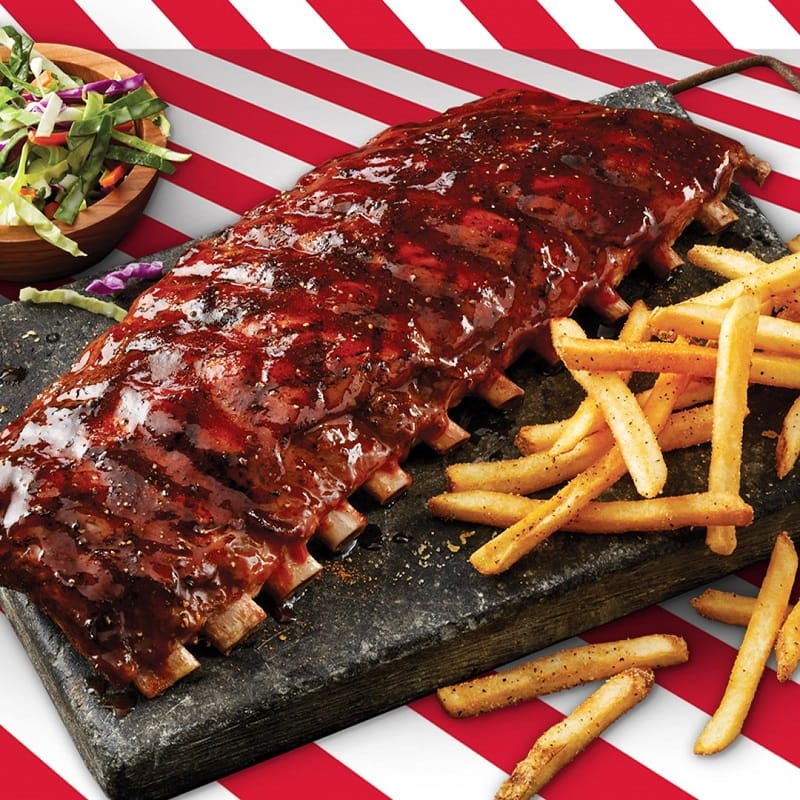
These mammoth beef ribs are sometimes called “Loaded Beef Ribs” for a good reason. They contain a substantial amount of meat, between 1 and 2 inches thick, which can feed multiple people. Back Ribs are another popular choice for their tenderness, but they don’t have as much meat as the Plate Short Ribs.
The Chuck Short Ribs, also a short rib type, have less meat than the Plate Short Ribs but are still a solid option for those who want to enjoy a beefy flavor with a tender texture. If you’re craving a hearty and meaty meal, Plate Short Ribs are the way to go.
Rump Roast Vs Chuck Roast: What’s the Difference?
While both require slow cooking methods to tenderize and develop their flavors, there are some key differences between the two. Rump roast is taken from the cow’s hindquarters, while chuck roast comes from the area between the neck and shoulder.
Rump roast is typically leaner and has less marbling than chuck roast, which can add some extra calories due to the additional fat. Both cuts are equally budget-friendly and require the same low and slow cooking time to achieve the desired tenderness.
Are Beef Ribs Larger Or Smaller Than Pork Ribs?
Based on factual data, beef ribs are generally larger than pork ribs. Beef rib cuts are longer and have more meat on them, compared to pork rib cuts which are usually 3 to 6 inches long and weighed in ounces. Sometimes, beef ribs are even referred to as dinosaur ribs due to their immense size.
However, it’s worth noting that the size of the ribs can also depend on the specific cut and the way the butcher trims them. In terms of cooking time, because beef ribs are typically larger, they often take longer to cook compared to pork ribs. It’s essential to consider the size of the ribs when planning your meal or purchasing them.
What Temperatures Should You Aim For When Cooking Ribs?
When cooking ribs, achieving the perfect temperature is crucial for ensuring that the meat is juicy, tender, and packed with flavor. For baby back ribs, the ideal internal temperature to aim for is between 195 to 200 degrees Fahrenheit. While the general guideline for cooked ribs is 145 degrees Fahrenheit, this temperature only ensures that the meat is fully cooked and not necessarily tender. To get succulent meat that melts in your mouth, you need to cook the ribs at 225 degrees Fahrenheit for at least 4 to 7 hours, depending on the thickness of the meat.
Checking the internal temperature of the ribs to ensure they’re properly cooked is important, but make sure to avoid inserting the thermometer probe in the middle of the bones as this will give a lower temperature reading. While falling off the bones may seem like the desired texture, it’s actually not the best definition of perfectly cooked ribs. You want the meat to be tender but still have a slight tug when it separates from the bones.
Is There A Significant Difference In Taste Between Baby Back Ribs And Spare Ribs?
While spare ribs are larger, meatier, and contain more bone and fat, baby back ribs are leaner and slightly curved. The main difference in taste comes from the composition of the meat, with spare ribs having more marbling and a higher proportion of meat between the bones. However, both ribs can be perfectly delicious when prepared properly with flavorful rubs and sauces. So whether you prefer the meatiness of spare ribs or the leaner texture of baby back ribs, the important thing is to enjoy this classic barbecue dish’s delicious flavors and aromas.
How Long Should I Smoke My Rack Of Ribs For Optimal Flavor And Tenderness?
If you want to smoke a rack of ribs for optimal flavor and tenderness, preparing in advance is important. The smoker should be set to 225°F – 250°F, and the ribs should be smoked for about 5-8 hours, depending on the size of the ribs. The popular 3-2-1 method involves smoking for 3 hours, wrapping the ribs, and smoking for an additional 2 hours, then unwrapping and smoking for the final hour, glazing with a flavorful sauce in the final 30 minutes. The 321 method is a popular and foolproof technique for fall-off-the-bone tender ribs. Ultimately, the cooking time will vary based on the type and thickness of the ribs, smoker temperature, and humidity.
What Are Common Seasoning Ingredients Used To Make The Perfect Rack Of Ribs?
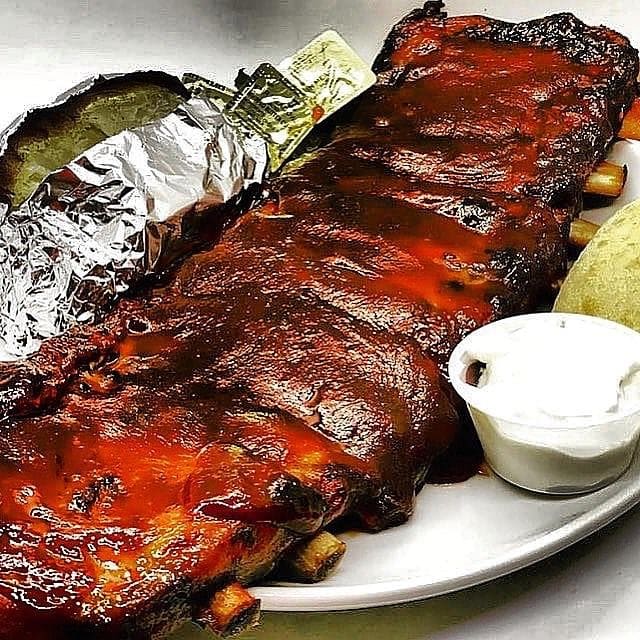
In my experience, the best rib rubs incorporate a balance of sweet and savory flavors. Brown sugar is a popular base for many rib rubs, as it adds a touch of sweetness that pairs well with smoky meats. Other popular seasonings include garlic powder, onion powder, salt, pepper, smoked paprika, cumin, chili powder, and dry mustard. Some pitmasters even add unique ingredients like cinnamon and celery salt to add a little something extra to the flavor profile.
Ultimately, the best rib rub comes down to personal preference, but incorporating a balance of sweet and savory flavors is always a winning combination. So, get creative in the kitchen and let your taste buds be your guide.
What’s The Difference Between St. Louis-Style And Kansas City-Style Barbecue Ribs?
The sauces share some similarities, but there are noticeable differences.
- St. Louis-style ribs are spare ribs that have had the breastbone and cartilage removed, while Kansas City style ribs are trimmed similarly, but the cartilage is left intact.
- St. Louis-style ribs are grilled, while KC ribs tend to be smoked.
- St. Louis-style ribs are specifically made from pork, whereas KC ribs can be either pork or beef.
- The sauce in St. Louis is tomato-based but not as sweet and a little thinner than the Kansas City style.
How Many Calories In A Half Rack Of Ribs
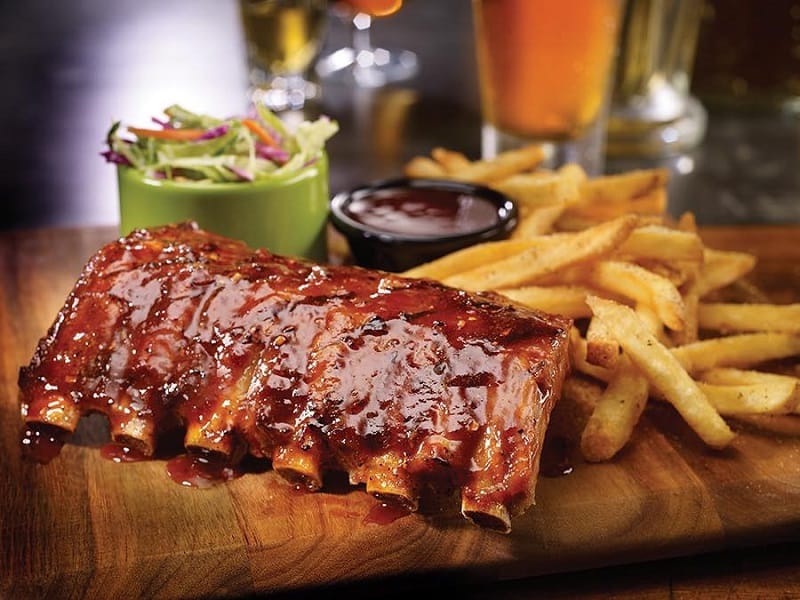
The answer to this question depends on the restaurant and the type of ribs they serve. Some restaurants offer baby back ribs, while others serve pork or beef ribs. The calorie count can also vary depending on the seasoning and sauce used to prepare the ribs. For example, a half rack of BBQ pork ribs from Wetherspoon contains 590 calories, while a half rack of baby back ribs from Chili’s contains 460 calories.
A half rack of ribs from Timber Lodge Steakhouse has 680 calories, and a half rack from Flanigans Seafood Bar and Grill has 664 calories. So, checking the nutritional information before you order is important if you’re trying to watch your calorie intake.
Conclusion
So, to sum it up, the answer to “how many ribs in a rack?” depends on the size of the ribs, the region in which you are cooking, and the particular cut of the ribs. Generally speaking, a full rack of St. Louis-style ribs will have around 8 to 10 ribs, a full rack of baby back ribs will have around 12 ribs, and a full rack of spare ribs will have 11 to 13 ribs.
However, as mentioned above, these numbers can vary depending on the region and the particular cut of the ribs. So, always check with your butcher or local grocery store for the exact number of ribs in a rack.
References:
- https://www.myfitnesspal.com/food/calories/half-rack-of-ribs-1376270562
- https://en.wikipedia.org/wiki/Pork_ribs
- https://www.smokedbbqsource.com/types-of-beef-ribs/

Hey readers! Chip Holland here, and I’m a Manager of this website. My passion for writing about it only matches my passion for BBQ. Follow my blog for mouth-watering recipes, tips, and tricks for the perfect smoke, grill, and BBQ. I’m sure you won’t be disappointed!
